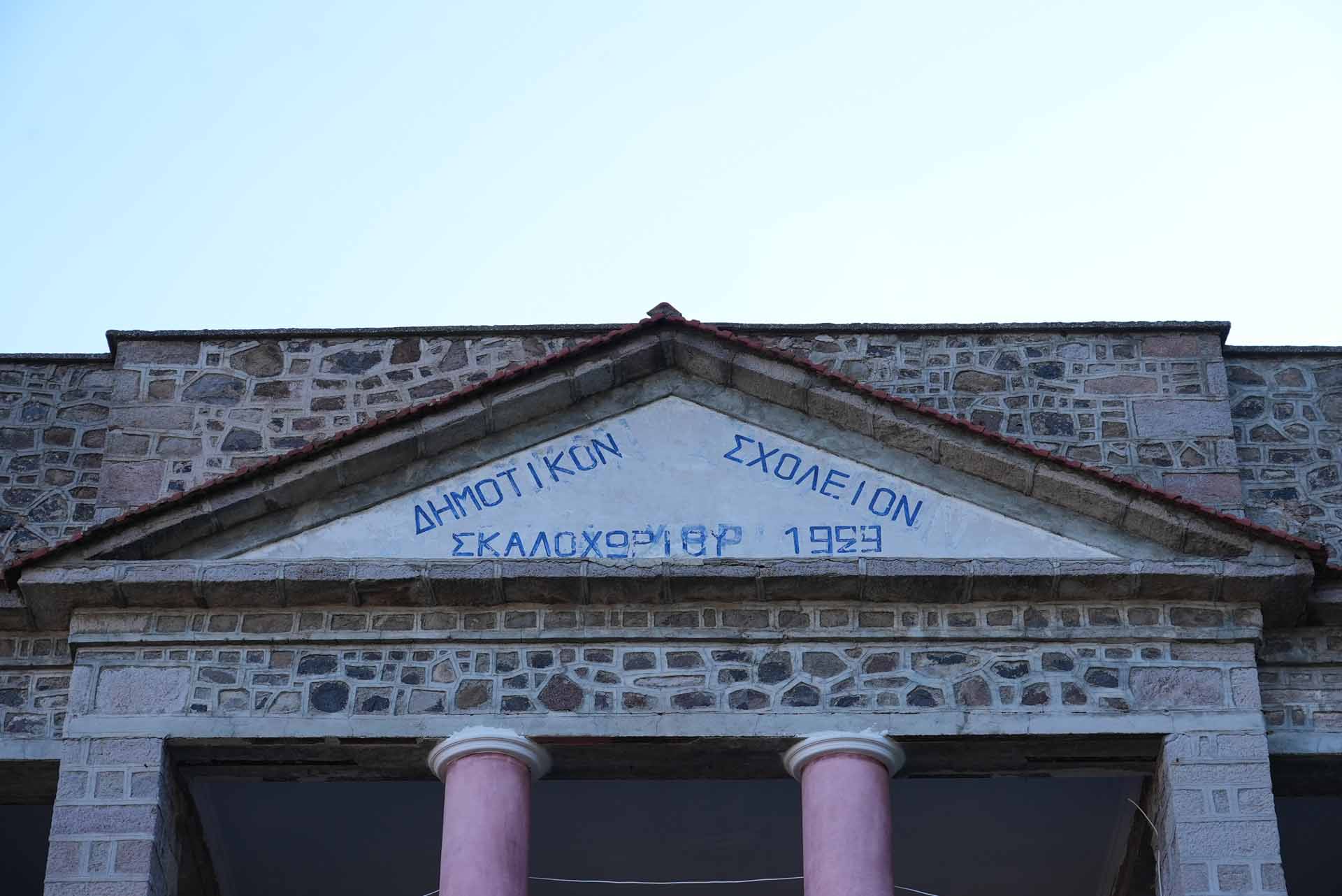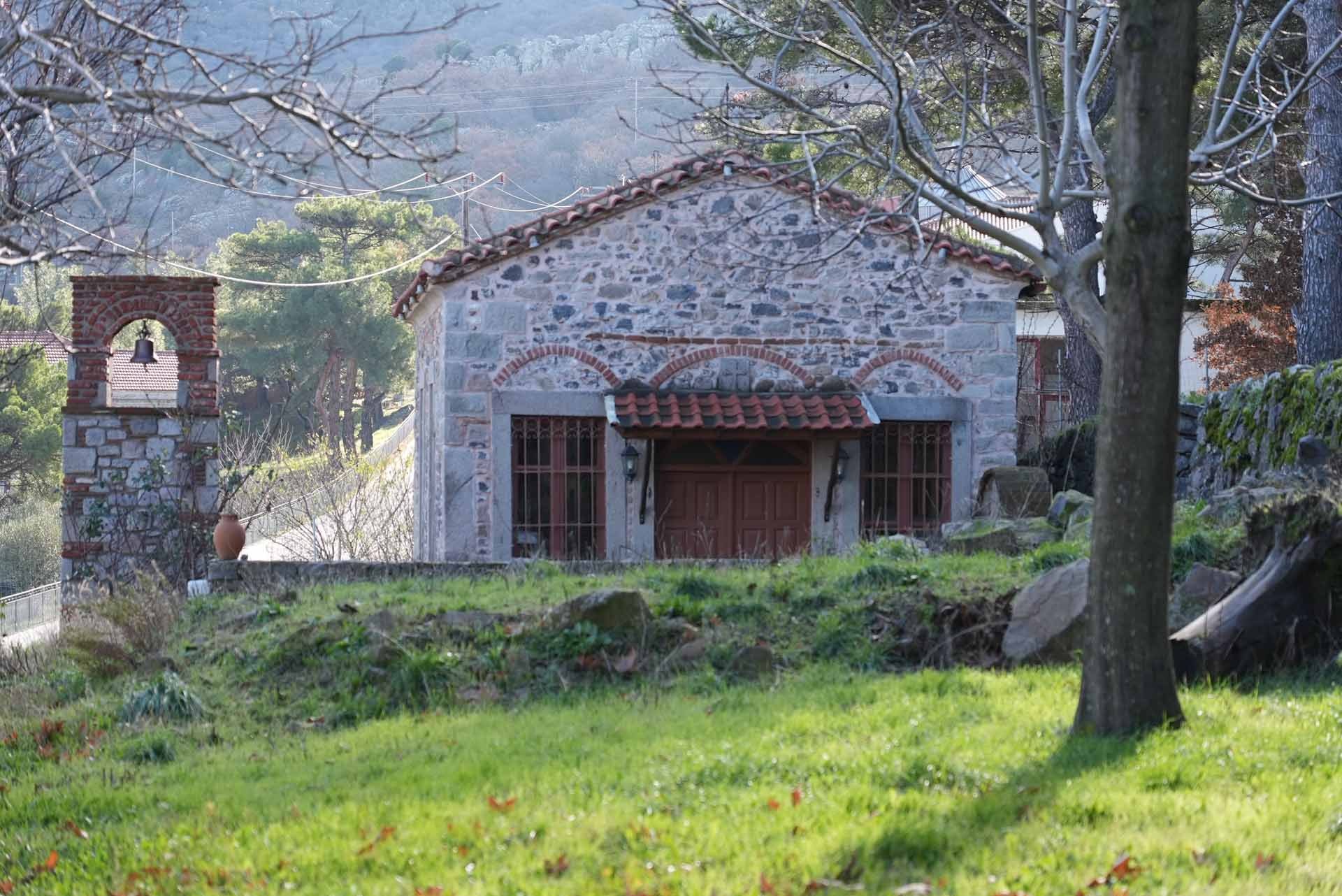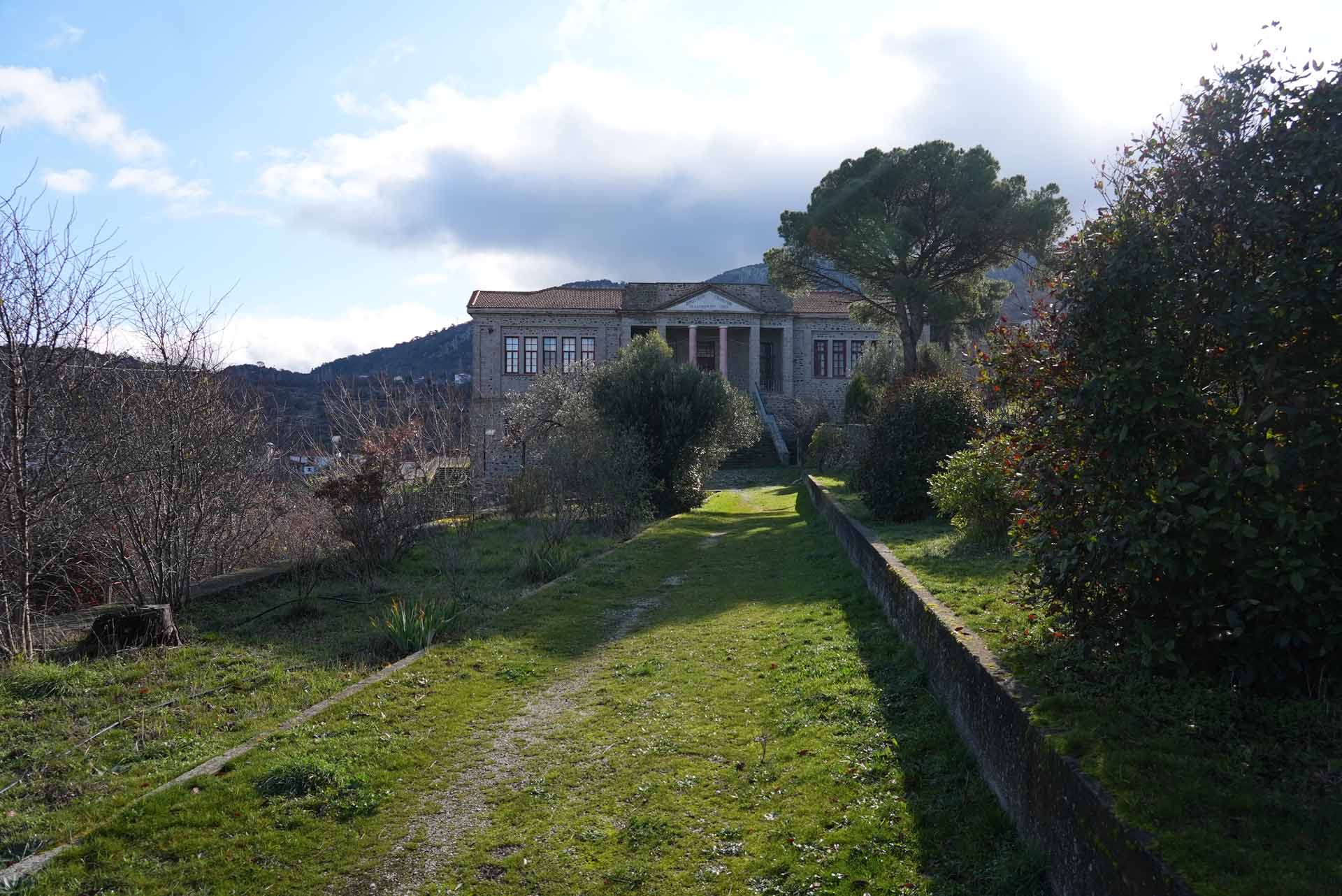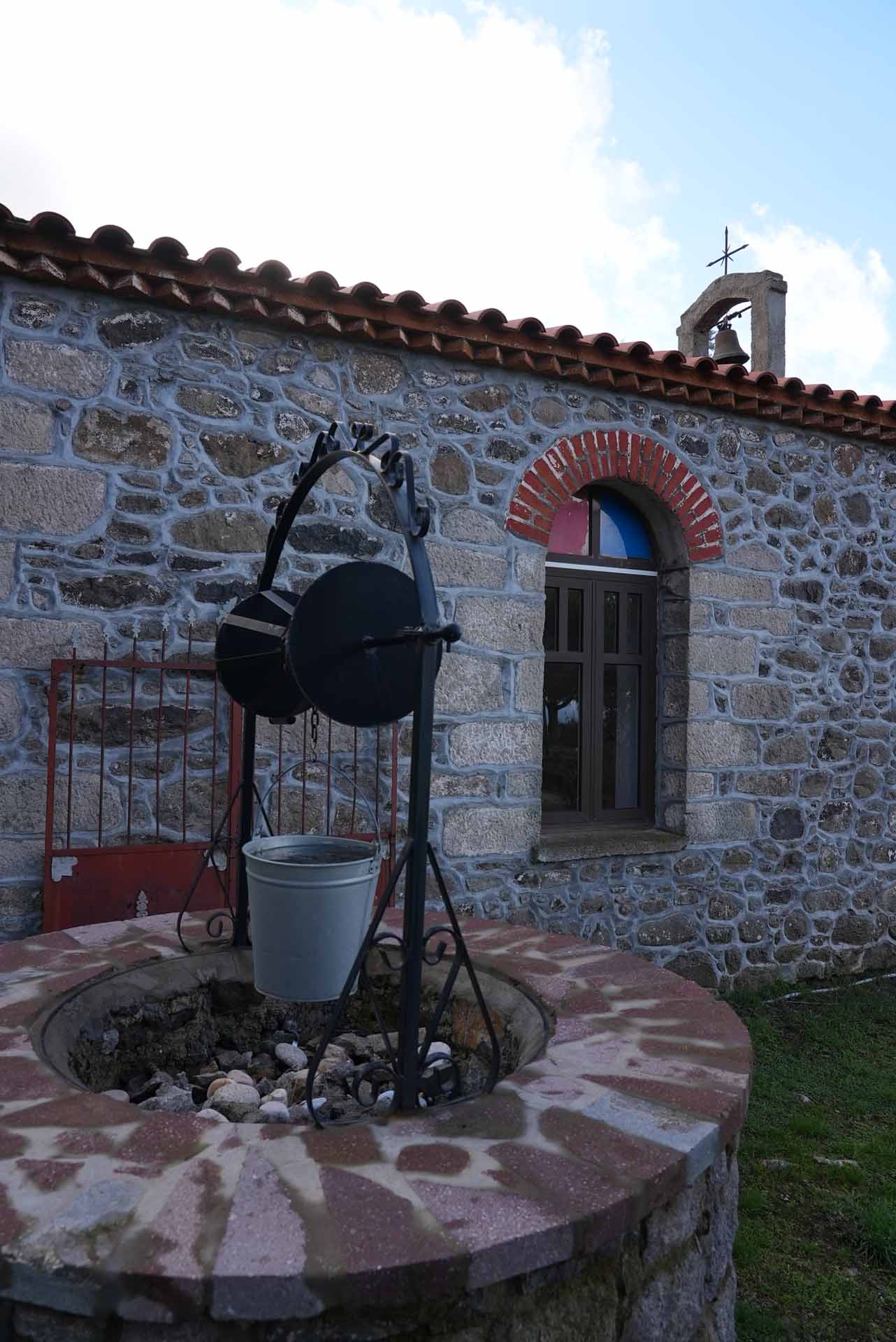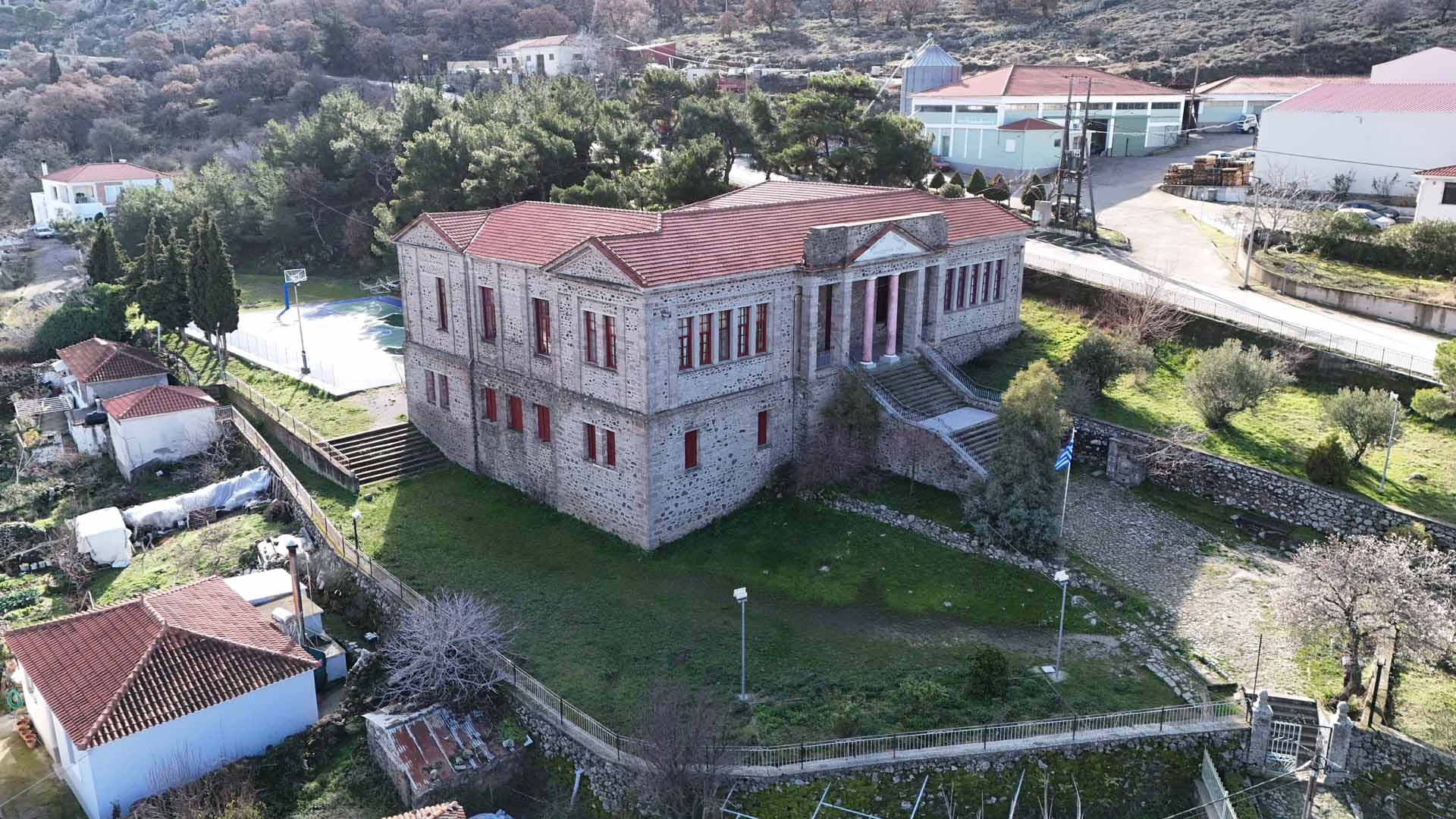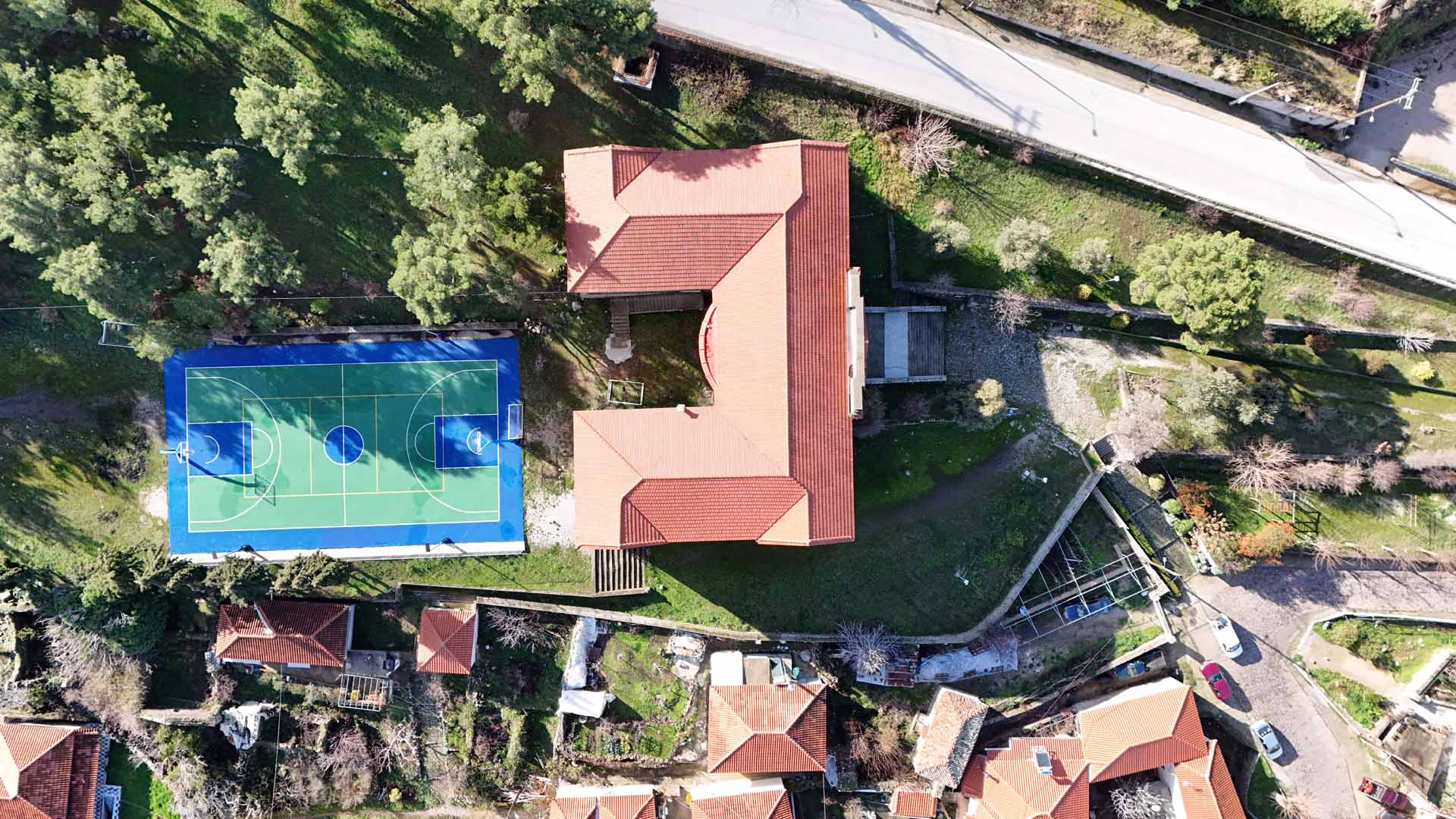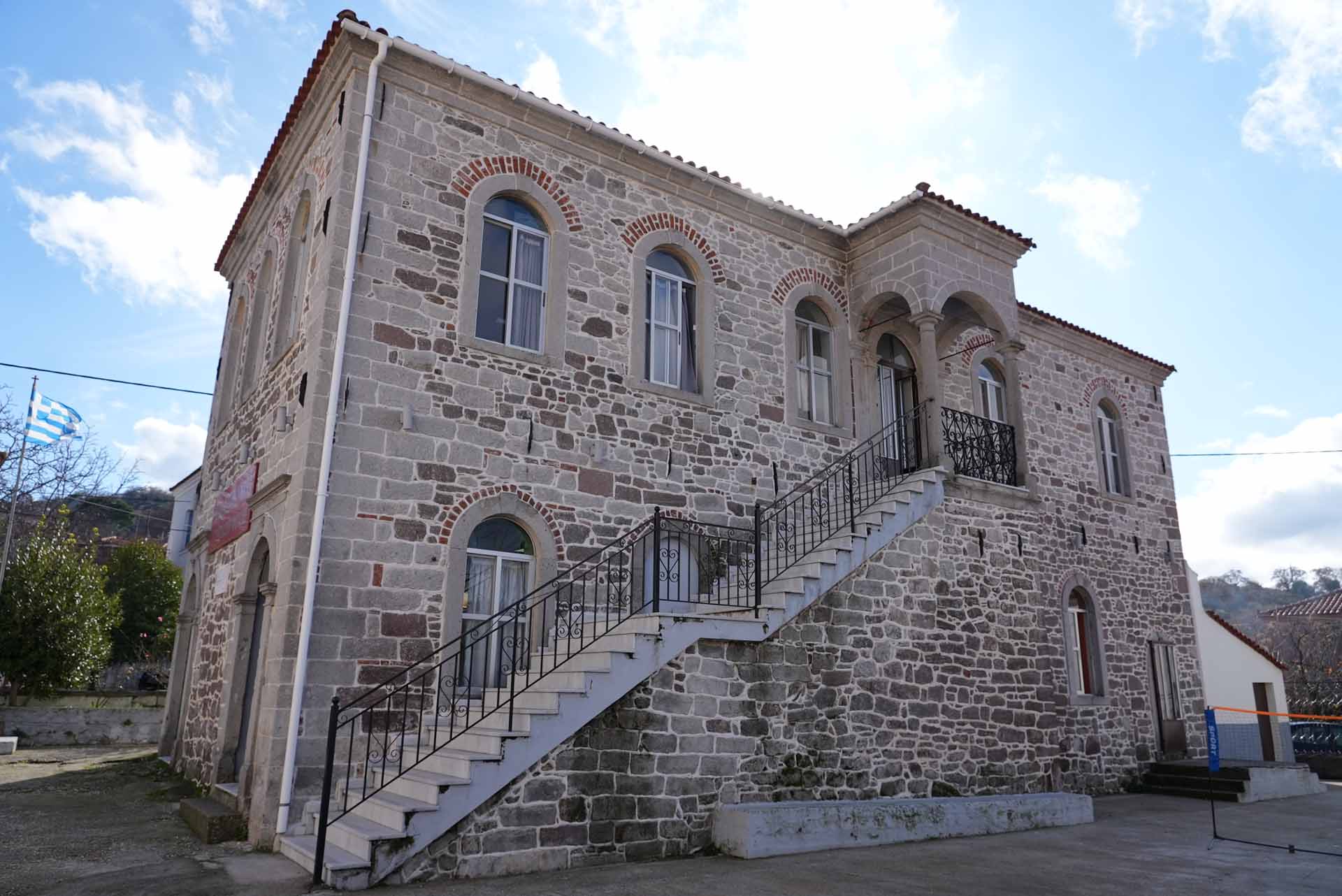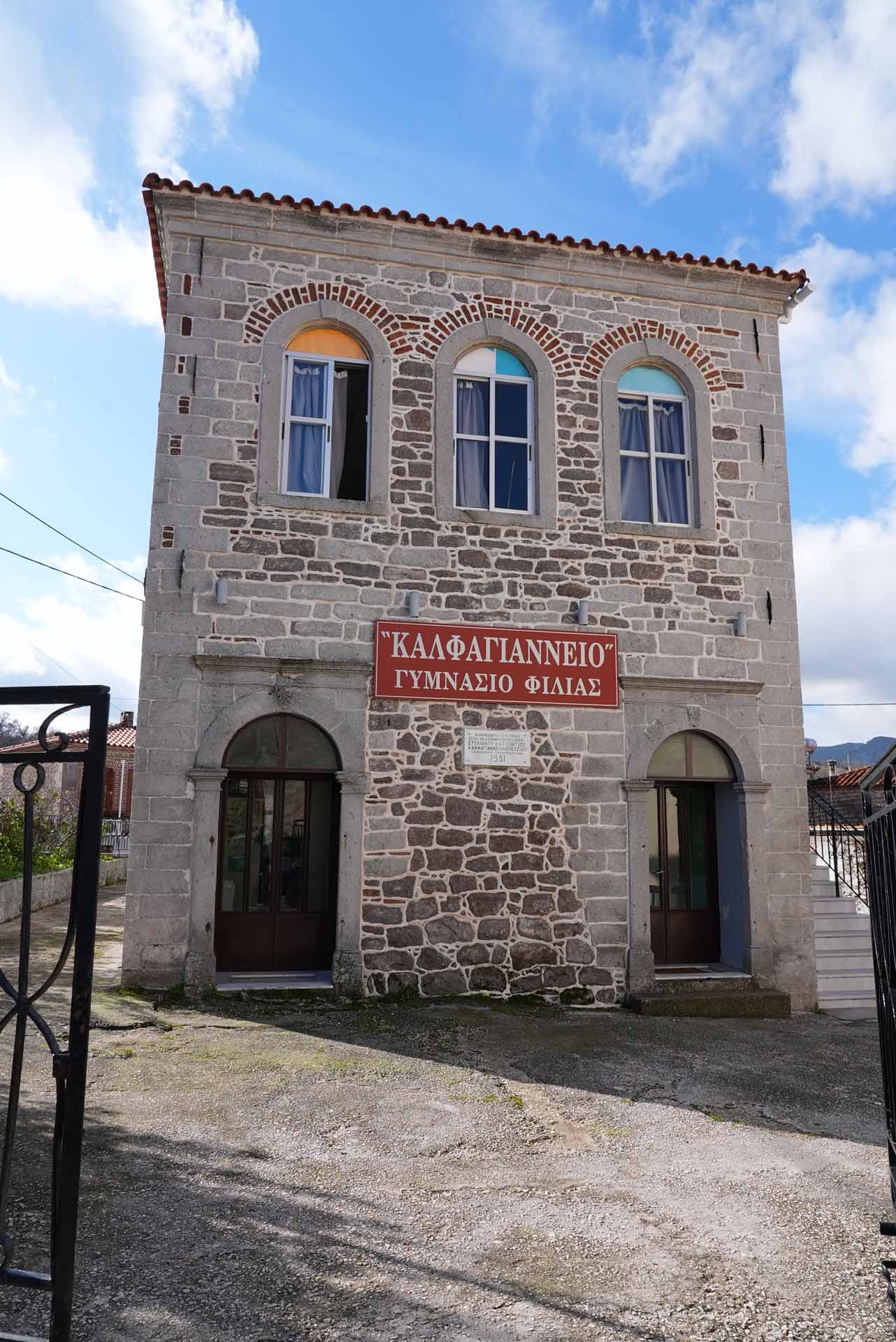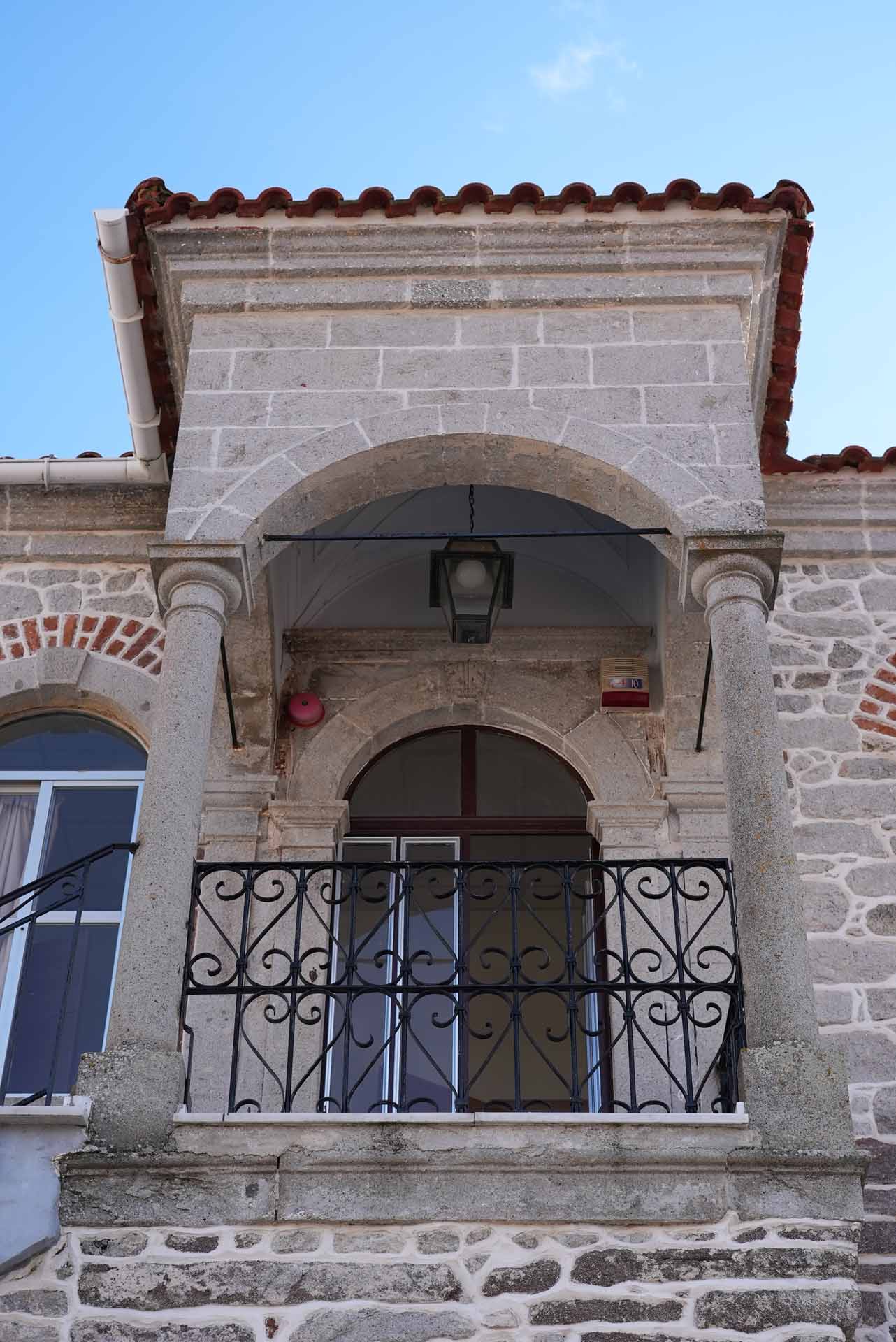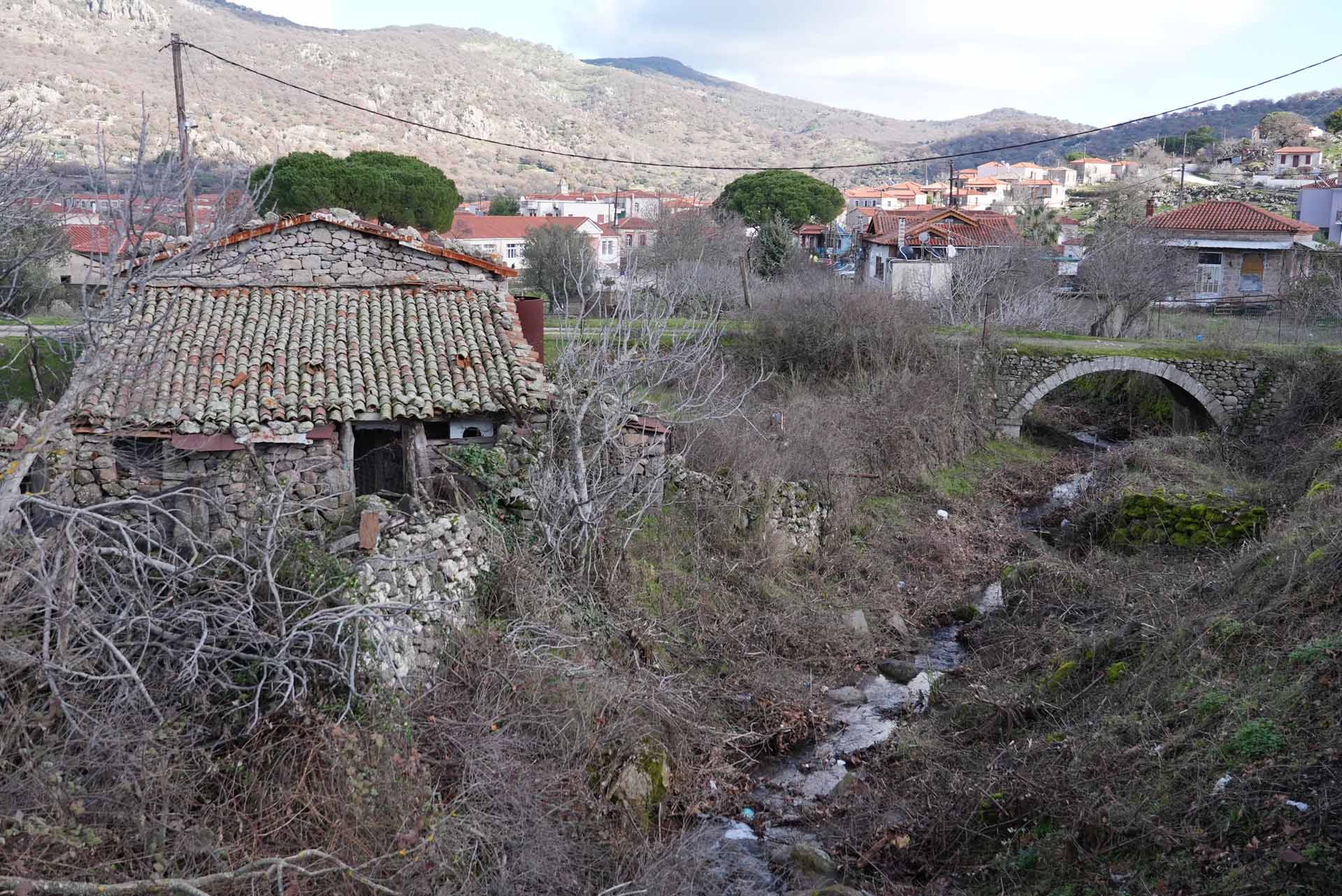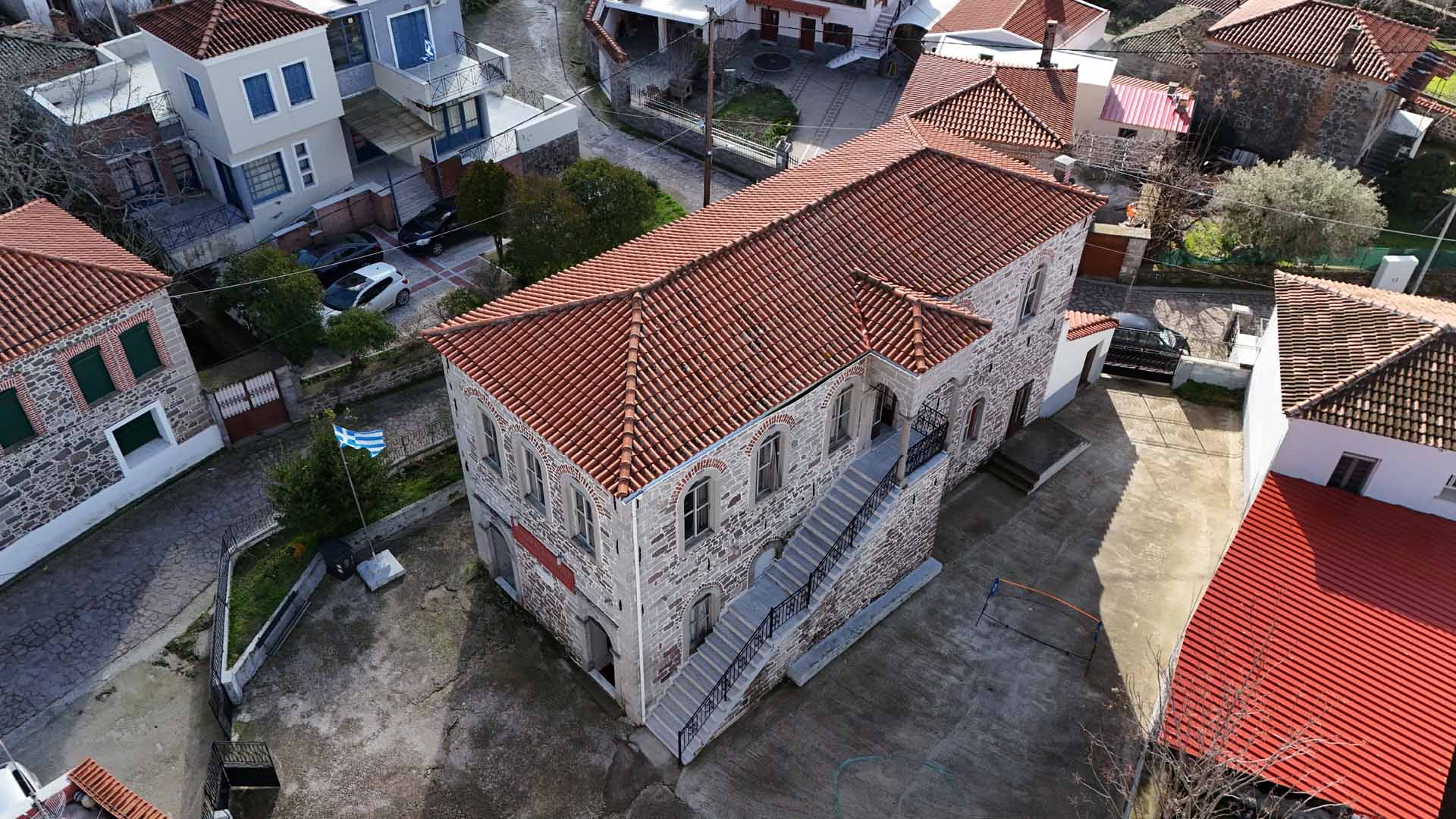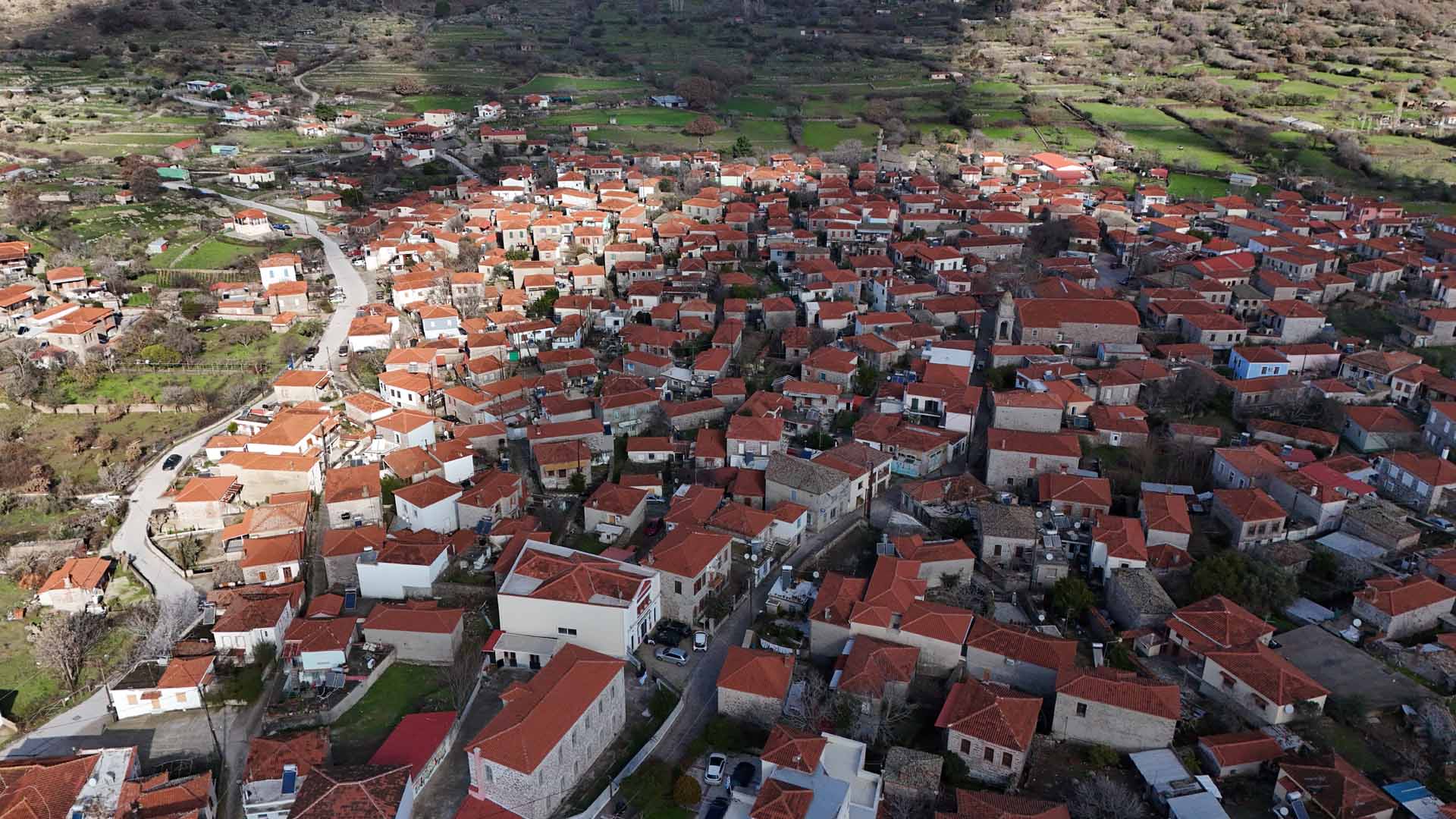Stonemasonry and building were longstanding traditional professions on Lesvos, encompassing quarrying, stone carving, and construction. The island’s abundant natural resources, unique geomorphology, and recurring natural disasters like earthquakes and fires favoured stone as a durable alternative to wood. Social and economic conditions also encouraged residents, particularly in western Lesvos—where olive cultivation and trade were less prominent—to engage in stone-related trades.
During the 19th century, a construction boom created opportunities for craftsmen from the neighbouring coast of Asia Minor, some of whom settled on the island after the 1923 population exchange, importing their skills and know-how.
Key examples of stone architecture in western Lesvos include the Primary School in Skalochori and the Kalphayannio High School (Gymnasium) in Filia.
The Primary School in Skalochori was built in 1929 with community labour and funds from the Skalochori Association of America, based on designs by architect Athanasios Demiris from Eresos.
The Kalphayannio High School (Gymnasium) in Filia is a 19th-century building constructed during Ottoman rule, initially serving as a boys’ school until 1940. After the end of the Second World War, it reopened in 1945 as a primary school and later as a nursery. Renovated in 1981 with donations from the Kalphayannis brothers, it now operates as a high school.
Both buildings are designated heritage monuments by the Greek Ministry of Culture, reflecting their architectural, cultural, and historical significance.





